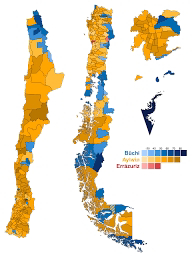The 1989 Presidential Election was a pivotal moment in the history of the nation, marking a significant turning point in the political landscape. This election, which took place against a backdrop of social, economic, and political upheaval, had far-reaching implications for the country's future. In this article, we will delve into the key details and outcomes of the 1989 Presidential Election.
Background
In the years leading up to the 1989 Presidential Election, the country was grappling with a range of challenges. Economic instability, social unrest, and political dissatisfaction were rampant, leading to a growing sense of disillusionment among the population. Against this tumultuous backdrop, the stage was set for a highly consequential election that would shape the course of the nation for years to come.
Candidates
The 1989 Presidential Election featured a diverse array of candidates representing various political parties and ideologies. Among the prominent contenders were candidates from both established political parties and emerging movements. Each candidate brought their own vision for the future of the country, appealing to different segments of the electorate with their policy platforms and campaign promises.
Campaigning
The campaign leading up to the 1989 Presidential Election was marked by intense political campaigning and public engagement. Candidates crisscrossed the country, holding rallies, town hall meetings, and debates to connect with voters and garner support for their candidacies. Campaign advertisements flooded the airwaves, newspapers, and billboards, as candidates vied for the attention and allegiance of the electorate.
Key Issues
Throughout the course of the campaign, several key issues emerged as focal points of debate and contention. Economic reform, social justice, national security, and foreign policy were among the central themes that resonated with voters. Each candidate offered their own solutions and approaches to addressing these pressing concerns, seeking to differentiate themselves and appeal to the electorate based on their proposed policies.
Election Day
On the day of the 1989 Presidential Election, voters turned out in large numbers to cast their ballots and determine the outcome of the race. Polling stations across the country were inundated with voters eager to exercise their democratic right and shape the future of the nation. The election process was closely monitored by domestic and international observers to ensure transparency and fairness.
Results
After a day of voting, ballot counting, and anticipation, the results of the 1989 Presidential Election were finally announced. The outcome of the election sent shockwaves through the political establishment, reshaping the balance of power and setting the stage for a new era in the nation's history. The victorious candidate's inauguration marked the beginning of a new chapter in the country's political evolution.
In conclusion, the 1989 Presidential Election was a watershed moment in the nation's history, embodying the hopes, challenges, and aspirations of a country in transition. The election served as a critical juncture that paved the way for transformative changes and set the trajectory for the nation's future. As we reflect on the events of the 1989 Presidential Election, we are reminded of the enduring legacy and significance of that historic moment in shaping the course of the nation.












0 Comments